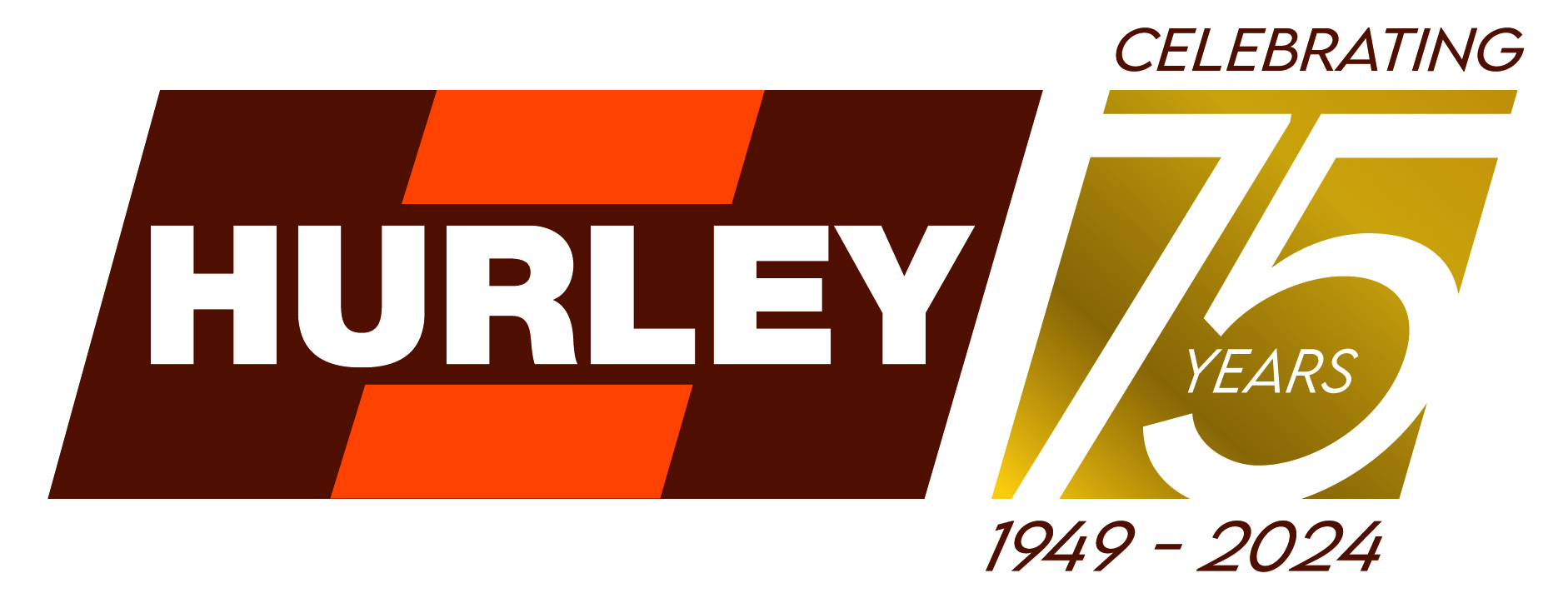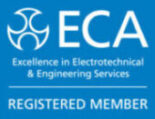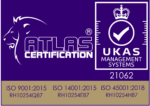Carbon Reduction Plan
Carbon Reduction Plan
Supplier name: F P Hurley & Sons Ltd Publication update: January 2025
Commitment to Achieving Net Zero
F P Hurley and Sons Ltd is committed to achieving Net Zero emissions by 2050 (Scopes 1, 2 & 3).
Baseline Emissions Footprint
The 2021-22 baseline emissions are a record of the greenhouse gases for a reference year. These emissions were produced prior to the introduction of all F P Hurley carbon reduction strategies. The 2021-22 baseline emissions year shown below is the reference point against which all F P Hurley emissions reductions can be measured.
| Baseline Year: 2021-22 | |
| Details relating to the Baseline Emissions calculations. | |
| The baseline emissions data for F P Hurley & Sons Ltd covers the period from April 2021 to March 2022. For this baseline year, we have only reported our full Scope 1 and Scope 2 emissions.
Our future Scope 3 emissions will include five specific categories required by the CCS:
Looking ahead, from 2024 to 2028, we expect significant growth in our business. As a result, our total emissions from Scope 1, 2, and 3 are likely to increase due to this expansion. It’s important to note that during the baseline period (2021–2022), a new regional office was opened in Exeter. The Exeter office, with its small team, has only a minor impact on our overall carbon footprint. |
|
| Baseline Year Emissions: 2021-2022 | |
| EMISSIONS | TOTAL (tCO2e) |
| Scope 1 | 61.21 (tCO2e) |
| Scope 2 | 82.65 (tCO2e) |
| Scope 3
(Included Sources) |
The following five categories will be used to establish our baseline for Scope 3 emissions, and this work is now managed internally:
Business Travel Data: This includes data on trips taken by train, company car, bus, etc. For instance, we are currently collecting fuel and mileage data from our company van fleet, which transports staff and materials to construction sites. Emissions from our leased company vehicles and vans will also be recorded under Scope 3. Individual staff members provide their own travel records on a daily or weekly basis to help with this data collection. Waste Generation: We are calculating emissions from the disposal of waste produced by our operations. This includes solid wastes. We measure this waste in kilograms or tonnes per year. Our waste treatment activities cover: · Landfill disposal · Recycling recovery · Incineration · Waste-to-energy (WTE) processes. Employee Commuting: This refers to emissions from employees travelling between their homes and their construction worksites. We are measuring emissions from: · Car/Van travel · Bus travel We will also look at other modes of transport, such as cycling and walking. For staff who work from home, we are including emissions from teleworking. Teleworking means working remotely often from home using technology like computers and video calls to stay connected, so our employees can complete their work without being in a traditional office setting. Each of these categories helps us accurately capture the full range of emissions related to our business activities. We are currently examining the use of one of the following calculation methods: · Fuel-based method, which involves determining the amount of fuel consumed during commuting and applying the appropriate emission factor for that fuel
· Distance-based method, which involves collecting data from employees on commuting patterns (e.g., distance travelled, and mode used for commuting) and applying appropriate emission factors for the modes used
· Average-data method, which involves estimating emissions from our employee commuting based on average (e.g., national) data on commuting patterns. 4. Upstream Transportation and Distribution (T&D) of our goods These emissions come from moving and handling the products and equipment that F P Hurley purchased during the reporting year. They include: · Supplier Transport: Emissions from our Tier 1 suppliers moving products for their own operations using their vehicles. This relates to the transporting materials (e.g., pipes, heat pumps, boilers, cables, ductwork) from manufacturer’s to F P Hurley’s storage facility or project sites. But does not include any transport in our vehicles.
· Third-Party Services: Emissions from transportation and distribution services that we bought from external companies, either directly or through intermediaries. These are the third-party logistics (freight & shipping): Emissions from trucks, ships, and planes moving goods from suppliers to F P Hurley. This is applicable if we pay for this service where these emissions will be under the supply chain / goods and services category, and this is not applicable to transport from F P Hurley’s owned vehicles.
· Transportation of hired equipment: Moving rental machinery (e.g., cranes, generators) to site. This is transportation by our suppliers. This is applicable when the transport is carried out by our own suppliers. If it is carried out by our own vehicles, then it comes under “company owned vehicles” or if we pay for this service, this transport will come under the “supply chain/goods and services” category. This does not include any transport in F P Hurley’s owned vehicles. · Upstream T&D emissions are defined as the transportation and distribution of products bought by F P Hurley, between our direct suppliers and our own operations, in vehicles not owned or operated by our business. 5. Other categories of Transport-Related Emissions · Client Logistics & Commissioning. This falls under “Other Business Travel” or “Company-Controlled Vehicles”. · Subcontracted Work: If subcontracted, it falls under “Supply Chain / Goods and Services”. · Warranty/Servicing Visits– This falls under “Other Business Travel” or “Company-Controlled Vehicles” · Removal & Disposal of Old Systems- This falls under “Other Business Travel” or “Company-Controlled Vehicles”. 6. Downstream Transport and Distribution (T&D) of our goods Under the GHG protocol, Downstream T&D emissions are defined as emissions from the transportation and distribution of products sold by F P Hurley, via services not obtained by F P Hurley and in vehicles not owned or operated by F P Hurley. In most cases, the downstream T&D will not be relevant to F P Hurley. |
| Total Emissions | 143.87 (tCO2e) -Scopes 1 &2 only |
| Reporting Year: 2022-23 | |
| EMISSIONS | TOTAL (tCO2e) |
| Scope 1 | 113.58 (tCO2e)- Estimated Figures on Building |
| Scope 2 | 54.53 (tCO2e) – Estimated Electricity |
| Scope 3
(Included Sources) |
As described above, the Scope 3 emissions data are now being retrospectively collected. These scope 3 data will be reported at the end of the next reporting period which is 2023 – 24.
The reporting categories for the F P Hurley Scope 3 emissions will be: · Business travel data (e.g. train travel, car, bus) · Waste generation (e.g. kg/ tonnes per annum) · Employee Commuting (i.e. travel from home to workplace) · Upstream transportation and distribution · Downstream transport and distribution of our goods |
| Total Emissions | 168.11 (tCO2e) |
Since 2023, our F P Hurley team has grown, and now we report our data for the full calendar year (January to December) to provide a more complete picture. Although our total emissions have risen due to projects being located further away, we are still committed to reducing our carbon footprint every year. We’ve also updated how we record our information. Please see our January-December 2024 report below.
| Reporting Year: 2024 | ||
| EMISSIONS | TOTAL (tCO2e) | |
| Scope 1 | 362.2 (tCO2e) – Accurate figures reported for Building & Fleet | |
| Scope 2 | 26.9 (tCO2e) – Accurate figures reported | |
| Scope 3
(Included Sources) |
97.5 (tCO2e)
The scope 3 data will be reported at the end of the next reporting period which is 2025.We have a new way of collecting data to make sure all information for the reporting categories for the F P Hurley Scope 3 emissions is included. This will be shown in our 2025 Total Emissions. · Business travel data (e.g. train travel, car, bus) · Waste generation (e.g. kg/ tonnes per annum) · Employee Commuting (i.e. travel from home to workplace) · Upstream transportation and distribution · Downstream transport and distribution of our goods |
|
| Total Emissions | 486.6 (tCO2e) | |
Emissions Reduction Targets
As we start including new details about our indirect (Scope 3) emissions, our total reported emissions will appear much higher. Between 2025 and 2030, even though our direct emissions (Scopes 1 and 2) are going down, the indirect emissions (Scope 3) will make up a larger part of our overall total.
We expect the way we report Scope 3 emissions to change and improve over the next five years, which means the numbers might go up and down as we get better at measuring them. In a few years, we might have to update our starting point to reflect these more accurate numbers.
Also, as we gather more detailed information about emissions from our supply chain, we expect our reported Scope 3 emissions to increase significantly, making our overall carbon footprint look large.
Future Plans for Energy Reduction:
- Heat Pumps: We aim to replace all our current gas-fired boilers used for heating and hot water in UK offices with heat pumps when the gas boiler reaches end of life.
- Better Building Efficiency: We aim to reduce our heating needs by at least 40% by improving our building insulation and energy efficiency.
- Lighting Upgrades: We’ll switch out all fluorescent lights for LED lights when the old ones reach the end of their life.
- Estate Optimisation: We have removed the design office building from our property portfolio.
Certification and Management Standards
Our Accreditations:
- We transitioned from the SQMAS quality standard to ISO9001 in 2023.
- We follow the ISO 14001 standard, which evolved from the British Standard BS8555.
- Additionally, we use other relevant standards where appropriate.
Pace of Change in Reducing Emissions
Our Commitment to Leading Decarbonisation: Our dedicated in-house team is driving our efforts to become a leader in cutting carbon emissions—not just for our own operations, but for our clients as well.
Upcoming Initiatives which are currently being investigated:
Electric Fleet: Investigating the commercial and operational impacts of converting our vans to electric vehicles.
Influencing Energy Procurement: Collaborating with our landlords to help them choose low-carbon energy sources and improve building efficiency.
Eliminating Single-Use Items: Removing single-use items from our operations to reduce waste and its related carbon emissions.
Water Conservation: Cutting our water usage by 5% each year by examining low-cost water saving measures such as WC cistern devices.
Improved Supply Chain Reporting: Enhancing how we measure and report emissions from our suppliers as part of our commitment to a Science Based Target.
This is our roadmap to reduce our carbon footprint and make a positive impact on the environment.
Declaration and Sign Off
This Carbon Reduction Plan has been prepared following the guidelines set out in PPN 06/21 and related reporting standards for such plans. We have reported our emissions using the published standards for Carbon Reduction Plans and the GHG Reporting Protocol corporate standard, and we’ve applied the correct Government conversion factors for greenhouse gas reporting.
Our Scope 1 and Scope 2 emissions have been reported in line with SECR requirements, and the necessary Scope 3 emissions will be reported according to the published standards for Carbon Reduction Plans and the Corporate Value Chain (Scope 3) Standard.
This plan has been reviewed and approved by our board of Directors.
Signed on behalf of F P Hurley
Adrian Hurley, Managing Director
Date: 25th March 2025

(1) https://ghgprotocol.org/corporate-standard
(2) https://www.gov.uk/government/collections/government-conversion-factors-for-company-reporting








